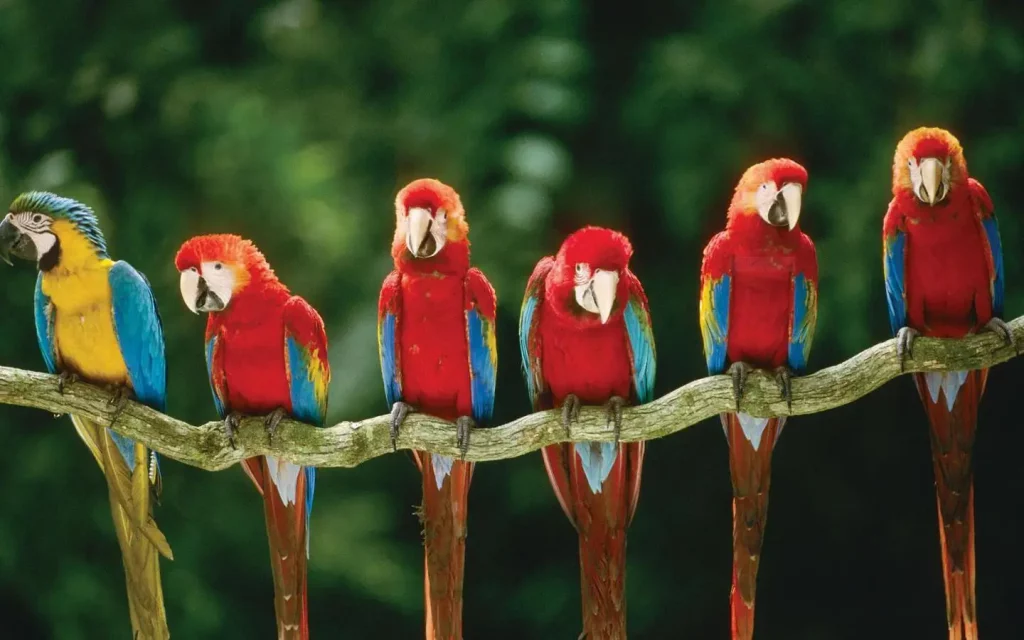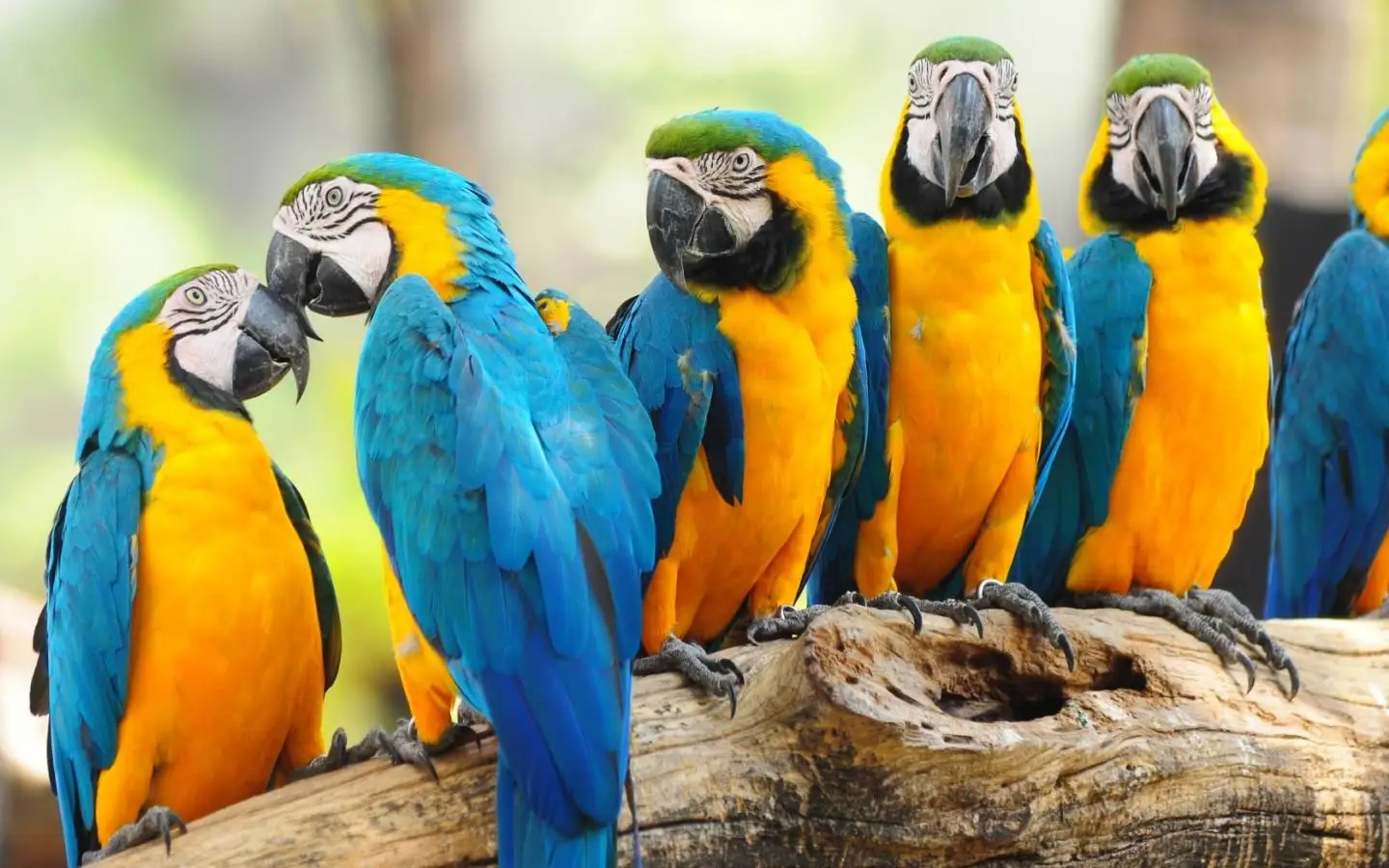Variety Overview
English Name: Macaw
Origin: Tropical regions of the Americas
Function: Companion bird
Size: Small
Care: Easy to care for
Morphological Features and Identification
Macaws can grow up to 90 centimeters in length, making them one of the largest parrot species. They have bright red bodies with blue and yellow wings, blue and red tails, white faces, and distinctive black markings around their eyes. Their tail feathers are somewhat long, and their faces are featherless. They possess large scythe-shaped beaks similar to those of cockatoos. When excited, their feathers can turn an even brighter red. Macaws have zygodactyl feet, meaning each foot has four toes—two pointing forward and two pointing backward. Both male and female macaws look alike.

Character Traits
Macaws are excellent at mimicking human speech. While their natural calls can sound rough and grating, with proper training, they can replicate human voices as well as other bird songs. Additionally, they can learn to imitate trumpet solos from brass bands, train whistles, dog barks, and various bird calls. It’s been reported that there was once a macaw whose owner was a heavy drinker; after getting intoxicated, the owner would sometimes slur indistinct words at the perched macaw.
Macaws also love to perform and frequently appear in various circuses. They ride bicycles on tightropes, pull carts, push grindstones, do somersaults, dance ballroom dances, play basketball, and more. These performances draw large crowds of tourists from around the world every day.
